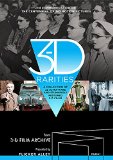| Reviews & Columns |
|
Reviews DVD TV on DVD Blu-ray 4K UHD International DVDs In Theaters Reviews by Studio Video Games Features Collector Series DVDs Easter Egg Database Interviews DVD Talk Radio Feature Articles Columns Anime Talk DVD Savant Horror DVDs The M.O.D. Squad Art House HD Talk Silent DVD
|
DVD Talk Forum |
|
|
| Resources |
|
DVD Price Search Customer Service #'s RCE Info Links |
|
Columns
|
|
|
3-D Rarities
Little-seen voyages into the third dimension
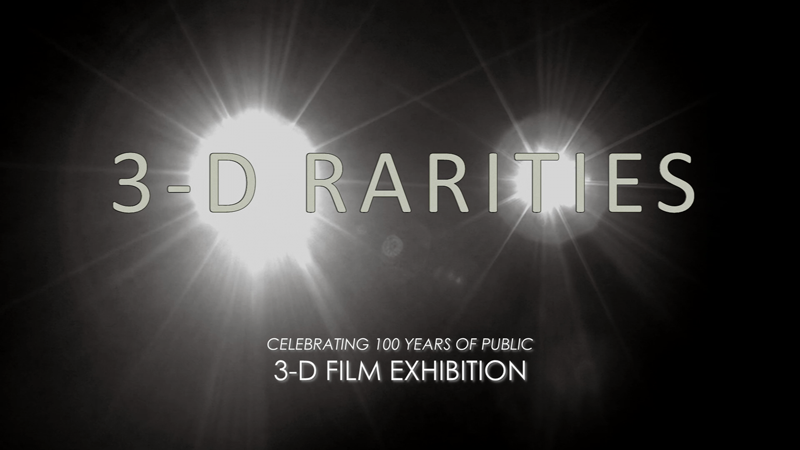
Reviewer's Bias*
Loves: Good 3D movies
Likes: Archival releases
Dislikes: Bad 3D
Hates: Home 3D naysayers
The Movies
When I bought a new television a year or so ago, one of the main things I wanted in it was 3D. I love the immersive feel of good 3D, and wanted to enjoy that at home. Since then, I've grown a healthy collection of titles which I enjoy watching, as I don't mind putting on a pair of glasses to get something more from a movie. Sure, there are terrible cash grabs, which add 3D as an afterthought in order to boost box office totals, but there are great ones as well, like its use in The LEGO Movie. Like with all movies, there's going to be a range in quality.
So when articles started appearing declaring that home 3D was dead (around the time that 4K Ultra HD displays were heralded as the next big thing, despite obvious content distribution issues due to the convergence of increased video streaming and decreased bandwidth freedom) it didn't feel great. I'm not fool enough to think that 3D will outgrow its niche status (especially considering the cost of watching it, which requires a 3D player, a 3D display and, often, a 3D-capable receiver.) But I don't think it's dead. If people are still willing to pay extra to watch 3D in theaters (and they are), there will be a good amount who want to do so at home, and if the tech continues to spread beyond the action blockbuster (like Wim Wenders' Pina or Gaspar Noé's upcoming Love, the audience could grow.
History tells us that the technology has legs, and 3-D Rarities, from The 3-D Film Archives and preservation-focused distributor Flicker Alley, has the proof, offering up a variety of rarely-seen 3D content from the technique's first 30 years. The film is divided into two halves: "The Dawn of Stereoscopic Cinematography", a mix of demos, art projects and commercial applications, and "Hollywood Enters the Third-Dimension", trailers and shorts showing how the tech was first applied to storytelling. In between, there's a vintage 3D intermission card. Here's a rundown of the contents:
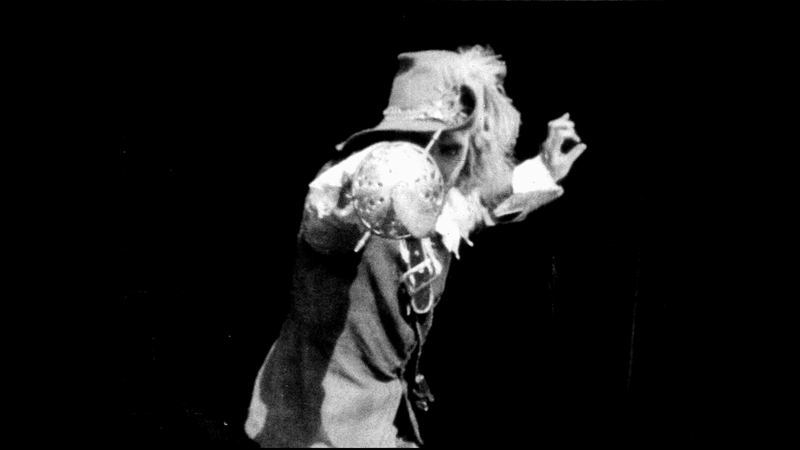
Kelley's Plasticon Pictures (7:41)
Essentially a demo reel for #D film, you get a mix of everything you would normally shoot from way back in 1921, with in-your-face gags, footage of Washington, D.C. and a speeding train. Though old, some of the effects are just wonderful in their use of depth.
William T. Crespinel/Jacob Leventhal tests (5:44)
Similar in concept to Kelley's tech demo, but perhaps a tad artsier thanks to the utilization of silhouettes, this piece (dating from between 1924 and 1927) delivers a range of activities that break through the fourth wall, including a baseball game, a parade and even a Charlie Chaplin imitator.
John Norling/Leventhal tests (3:25)
1935 sees the demo gags get a bit more involved, adding in a car chase and an affecting roller coaster, but some things don't change, as more baseball sends the ball right at the audience.
Thrills for You (8:26)
This 1940 promo for the Pennsylvania Railroad, the first "talkie" on the disc, is pretty naked in its commercial purpose, but it also shows off a luxury train of the era quite well, including an striking look at the manufacturing process, in a proto-How It's Made, which has quality 3D effects to share (though it feels too long in spots.)
New Dimensions (9:08)
Like Thrills for You, this 1940 film for Chrysler was all about pushing product, but it used stop-motion musical animation and some very aggressive off-the-screen effects to show in tremendous detail the process of building a Plymouth. Though the effort of showing exactly how the car is built is commendable, there comes a point where seeing all these parts flying at your face and slowly coming together tips over into overkill. Well-made 3D overkill.
Now is the Time (3:13)
Welcome to the experimental stage of our program, as Canada offers up a trio of trippy 3D animations. The first one, a 1951 short from Norman McLaren, featured numerous smiling suns and stick figures in creating something of a peppy, psychedelic feel and beating Stan Brakhage to the punch. The animation lends itself to 3D well, but the free-form concept might not appeal to all.
Around is Around (7:28)
Back for more in 1951, this time McLaren played with waveforms and made something even more surreal, but which works just as well as 3D eyecandy.
O Canada (1:32)
McLaren's partner Evelyn Lambert ran the show in this film from 1952, which sets an animated zoom over an artistically-rendered Canada to the country's anthem. The effect is slightly mawkish thanks to the connection of the symbolism and the patriotism, but it's a well-made bit of love of country.
Twirligig (3:35)
Also from 1952 is this film, made by Gretta Ekman, a student of McLaren's. It combines the techniques used in the previous three films, to create something equally unusual and artistic.
Bolex Stereo (10:32)
More in line with Thrills for You and New Directions, this 1952 film promotes the new Bolex Stereo camera by showing you what you can do with it, which includes shooting a cat being thrown and being chauvinistic. It's a product of its time without a doubt, and has great 3D effects and a look at times long gone.
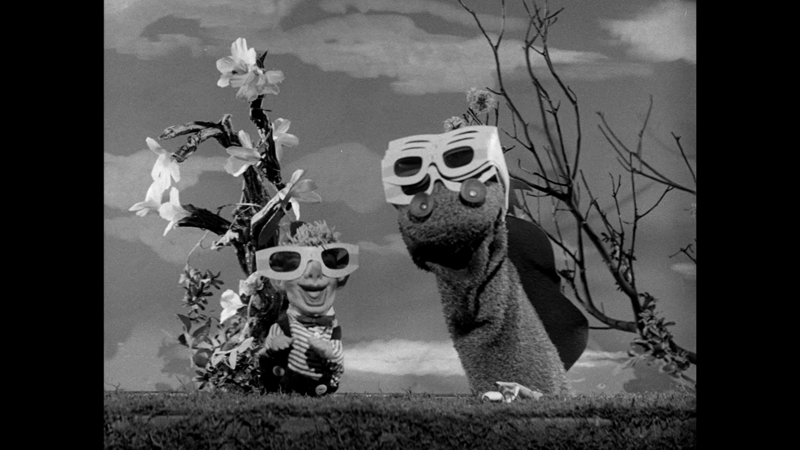
M.L. Gunzburg presents Natural Vision 3-Dimension (5:23)
Not much has to be said about this 1952 piece, outside of "3D Beany and Cecil." The classic kids characters in 3D are the reason to check this out, but you also get to meet Miss Third Dimension (pretty women were a must in the early days of 3D) and hear about the health benefits of the Natural Vision 3D process. Basically, people were dumb back in the day.
It Came from Outer Space trailer (3:39)
A classic 1953 preview for the well-reviewed sci-fi film, this is a look back at a time when scares were enhanced by 3D rather than reliant on it. This was the first ever trailer made in 3D.
Rocky Marciano vs. Jersey Joe Walcott (16:36)
Maybe the most interesting piece on the disc, mainly because this 1953 pseudo-documentary obviously wears a connection to Marciano on its sleeve as it watches him prepare for his fight with a near-the-end-of-his-career Walcott. The fight itself is tremendously short and full of questions the film deals with inelegantly, but to get a 3D presentation of a sporting event is intriguing.
Hannah Lee trailer (2:07)
There are some fun effects in this 1953 trailer, but the real enjoyment is in the awkward delivery of star John Ireland as he attempts to sell the film by directly addressing the audience.
Stardust in Your Eyes (6:10)
Comedian Slick Slavin got the spotlight in this 1953 short, as he unreels a host of imitations, including James Cagney, Cary Grant, Jimmy Stewart, Peter Lorre and Humphrey Bogart, among others Unfortunately, the presentation doesn't live up to his talents, as it feels the least 3D of almost any of the material here, thanks to little separation between the camera and Slavin and Slavin and the backdrop.
The Maze trailer (2:16)
The beginning of this trailer, which has some of the best 3D effects of the entire disc, gives way to very traditional horror filmmaking, which is a disappointment, considering how well the trailer turned out. Even so, it's the kind of film you want to see.
Doom Town (15:25)
Another bit of history here with the first 3D documentary, looking at tests on atomic bombs at Yucca Flats in Nevada. The feel is unusual, and the actual explosion is a recreation due to some missing footage, but it's still interesting to watch (though not as interesting as the history behind it (which you can read about in the extras.]) Even so, seeing an atomic bomb in 3D is something to behold.
The Adventures of Sam Space (9:13)
Reminiscent of George Pal's old Puppetoons, this stop-motion adventure in space is kind of ridiculous, as Sam and company, including a giant robot, fight off space enemies in a violent battle. Though obviously aimed at kids, it might be a little too much for some. As a piece of animation history, it's just fun, with 3D work that gives the image good depth..
I'll Sell My Shirt (9:54)
After footage of yet another young lady swinging toward the camera, this time stripping down to shake it in tassles, a risque vaudeville act sees two guys offer a down-on-her-luck woman money for her things, working her down to her underwear. There's a bit of comeuppance and a lot of creepiness, but it also has some funny wordplay, which combined with the lady in her drawers must have made this a crowd-pleaser. Besides the opening sequence though, the 3D isn't that integral.
Miss Sadie Thompson trailer (3:00)
Rita Hayworth in 3D seems like a pretty solid business plan, and to cast her in a classic story adapted from a W. Somerset Maugham tale was a pretty smart move. This trailer capitalizes on her attractiveness and the more sordid elements of the plot, and though the 3D isn't mind-blowing, it's 3D Hayworth, so...
Boo Moon (7:33)
One of the best entries on this disc is this Casper the Friendly Ghost short from 1953, which sees the apparition head to the moon in search of the friendship he can't find on Earth, only to end up in the middle of a battle between the moon people and tree monsters (just go with it.) The draw here is the brilliantly vibrant animation, which takes advantage of Casper's translucent look to achieve some fun 3D effects. The story is mildly entertaining, and mildly disturbing when Casper goes on the offense.
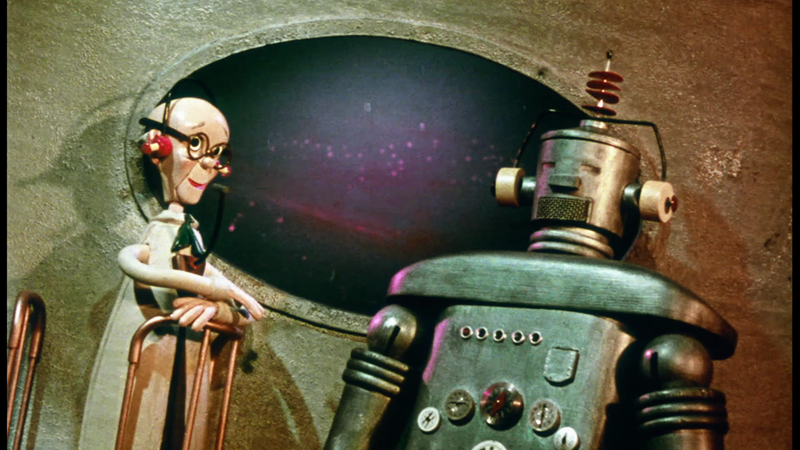
The Disc
The film arrives on one Blu-ray, which is packed in a slightly thick, clear Blu-Ray keepcase, with a two-sided cover. Static 3D menus offer a choice to watch the entire presentation, select entries, and check out the extras. There are no audio options, subtitles or closed captioning.
The Quality
The image is all over the place thanks to variety of sources and conditions from which these films were salvaged, but it never looks significantly "bad," though some of the very early content is a bit worse for wear (as the producers note in the booklet, where applicable.) Otherwise, on the whole, the material here looks stupendous, with clear 3D effects (for the most part) vivid color (where appropriate) and a very clean, sharp image where the originals would allow for it. Due to the rarity of most of the films, it would be nearly impossible to compare them properly, but considering the quality of films of this age (where outside of of occasional damage they look wonderful) Flicker Alley and company get the benefit of the doubt.
The films arrive with a DTS-HD Master Audio 5.1 audio track, which is overkill considering nothing is really offered soundwise outside of the center channel. Though their age limits the aural bells and whistles, there's nothing to complain about in terms of this presentation.
The Extras
The most interesting extra for film fans is likely the two minutes of color 3D footage of Playboy model June Wilkinson and Don Kenney (in drag), shot by Francis Ford Coppola for 1962's The Bellboy and the Playgirls (from the 18 minutes he shot in total to add to the film in post-production.) Showing impressive depth (and impressive cleavage) it's also notable for being edited by exploitation mater Jack Hill.
Three audio commentaries are available, with film expert Jack Theakston discussing Kelley's Plasticon Pictures and the Crespinel/Leventhal tests, while animation expert Thad Komorowski handles Boo Moon. Between the three, you get quite the education in the history of 3D, as well as the process of making or capturing 3D footage. The level of detail they provide is excellent, down to Theakston pointing out the 3D cliches utilized in the footage.
A quartet of 3D photo galleries wrap things up on the disc, starting with stills from the 1923 production of The Hunchback of Notre Dame, starring Lon Chaney. Though not always deep, these photos show off the film's sets well, and are historic as the first ever 3D publicity materials.
15 pictures from the 1939 World's Fair in New York are more effective in terms of the 3D on the title side (a moody piece of art-deco design) than the sculptures and exhibits they depict on half of each frame, but they are worth a look. The two View-Master reels from 1950's Adventures of Space Sam work far better, with solid depth that really sells the intergalactic setting of the sculptures. Each frame has part of the Space Sam story, but they move a bit too fast to read in one shot.
Finally, a selection of pages from 3D comic books from 1953 show off some truly impressive depth, thanks to the restoration of the content, which includes Mighty Mouse, Tor, Captain 3D and the Three Stooges, as well as a selection of ads, blinkies (which show a different image to each eye) and a parody of the concept of 3D. As someone who was always disappointed with 3D comic books (I'm looking at you Valiant Vision), it's great to see it done right here.
Also in the package is a fantastic 24-page booklet, with introductions from Leonard Martin and actor Trustin Howard, which offers insight into and details on each film, as well as the extras, with plenty of notes about the restoration of the pieces. An invaluable addition, considering the majority of the material is offered without context on the disc.
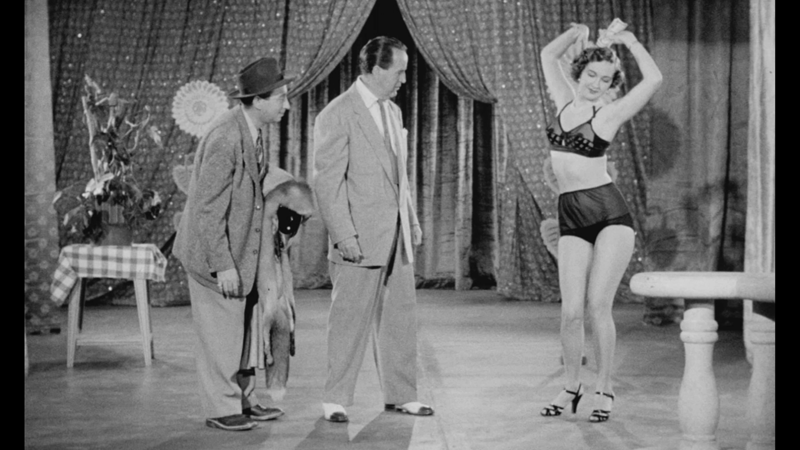
The Bottom Line
People like to dump on 3D televisions and 3D Blu-ray as a fad, but when you see, via the content of Flicker Alley and the 3-D Film Archive's 3-D Rarities, that 3D has been around for over 100 years and keeps getting better, perhaps people are just watching the wrong things in 3D. This set offers a great mix of quality effects and archival material that cinephiles will want in their collections, presented in terrific quality with some interesting and informative extras. You aren't getting this stuff on Netflix anytime soon.
Francis Rizzo III is a native Long Islander, where he works in academia. In his spare time, he enjoys watching hockey, writing and spending time with his wife, daughter and puppy.Follow him on Twitter
*The Reviewer's Bias section is an attempt to help readers use the review to its best effect. By knowing where the reviewer's biases lie on the film's subject matter, one can read the review with the right mindset.
|
| Popular Reviews |
| Sponsored Links |
|
|
| Sponsored Links |
|
|
| Release List | Reviews | Shop | Newsletter | Forum | DVD Giveaways | Blu-Ray | Advertise |
|
Copyright 2024 DVDTalk.com All Rights Reserved. Legal Info, Privacy Policy, Terms of Use,
Manage Preferences,
Your Privacy Choices | |||||||









